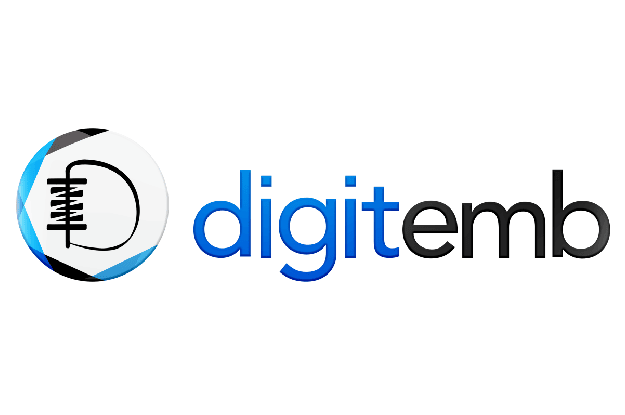Everywhere we look today—online stores, billboards, packaging, mobile apps, custom clothing, animations, and even product manufacturing—one design format quietly powers it all: vector graphics. They’re the reason a logo looks razor-sharp on a business card and just as sharp on a 40-foot banner. They’re the foundation behind crisp illustrations, polished brand systems, technical drawings, and machine-ready files. What makes vector graphics so valuable is not only how they look, but how they behave: flexible, scalable, lightweight, and indefinitely editable.
Vector graphics are built using mathematical points and curves. These formulas define shapes with extraordinary accuracy, which means the artwork is not tied to pixels or resolution. You can scale vector graphics to any size—bigger, smaller, wider, taller—without losing clarity. In a world where visual content is used across hundreds of different platforms, this scalability gives vector graphics a massive advantage over traditional image formats.
Vector Graphics: Where Consistency Meets Professional Quality
Design is more competitive than ever, and brand identity depends heavily on consistency. When a business shows its logo in different places, it must look identical each time. If it appears blurry on packaging or distorted on signage, that inconsistency harms the brand’s credibility.
Vector graphics eliminate these problems completely.
They allow designers to refine shapes, adjust colors, modify lines, or resize the entire artwork without sacrificing quality. This makes vectors the only dependable format for visual identity. Whether a logo will be embroidered on hats, printed on labels, used on mobile apps, or installed as storefront signage, vector graphics ensure flawless presentation every single time.
A strong brand thrives on clarity—and vectors guarantee that clarity regardless of scale.
A Foundation for Apparel Decoration and Custom Patch Production
The apparel world relies deeply on vector graphics because every production method requires precision. From t-shirts and hoodies to hats, jackets, and uniforms, the artwork must be clean, scalable, and easy for machines to interpret.
Screen printers use vector graphics for accurate color separations.
Embroidery digitizers depend on vector outlines to map stitch directions.
Vinyl cutters follow vector paths for precise cutting.
Sublimation printers rely on vector clarity to avoid jagged edges.
Custom patch manufacturers also depend completely on vector graphics. Whether producing embroidered patches, PVC patches, woven designs, chenille styles, leather patches, or printed patches, vector artwork defines the shape, layout, text spacing, and complexity of each design.
Without vectors, patch details become distorted, text becomes unreadable, and production becomes unpredictable. Vector graphics bring structure and reliability to every stitch, print, and cut.
The Creative Power of Vector Graphics in Illustration
Vector graphics also fuel modern artistic expression. Digital illustrators use vector tools because they provide total freedom to explore shapes, colors, and compositions without quality limitations. Artists can zoom in endlessly to refine a single point, or zoom out to adjust the entire artwork—all while maintaining perfect sharpness.
Vector styles—flat illustration, geometric characters, minimalist artwork, bold icons, and corporate graphics—have become dominant across marketing campaigns, app design, animation, and social media content. These visuals look modern and professional, making them ideal for brands seeking clean and friendly communication.
Vector art can also be animated easily, making it a natural fit for motion design. From explainer videos to animated logos, vector graphics provide the clarity and adaptability required for smooth visual storytelling.
Vector Graphics in Advertising and Large-Scale Printing
One of the biggest advantages of vector graphics is their performance in large-format projects. When a design is enlarged significantly—vehicle wraps, storefront banners, wall murals, and billboards—any pixelation becomes impossible to ignore.
Vector graphics guarantee flawless results.
Their mathematical curves remain smooth, their outlines remain clean, and their details remain crisp even at extreme sizes. This reduces production errors and ensures that brands appear professional in public-facing advertising. Printers trust vector artwork because it maintains accuracy throughout the entire printing process.
For any company investing in visibility, vector graphics protect both quality and credibility.
Vector Graphics as the Blueprint for Manufacturing
Outside the creative industry, vector graphics also drive modern manufacturing. Machines like laser cutters, CNC routers, engravers, and industrial plotters read vector paths as precise instructions. These machines use vectors to determine where to cut, carve, shape, or engrave.
Packaging engineers design dielines using vector software.
Product developers outline molds and prototype parts using vectors.
Sign makers create dimensional lettering and shapes from vector paths.
Because vectors are mathematically exact, they prevent production errors and ensure repeatable accuracy in large-scale manufacturing. This makes vector graphics not just a creative tool—but a technical necessity.
Future-Proof Design: Why Vector Graphics Will Only Grow More Important
As digital technology evolves—higher resolution screens, responsive layouts, AI-generated visuals, augmented reality, virtual reality, and motion-driven interfaces—the need for adaptable, scalable graphics becomes greater. Vector graphics are built for this future.
They are lightweight, fast-loading, and visually consistent across any display. They animate smoothly, integrate seamlessly with UI/UX design systems, and maintain clarity even on ultra-high-resolution screens. As brands and creators embrace interactive and immersive experiences, vector graphics will continue to power these advanced visual environments.
In the next generation of digital design, vectors will remain a core foundation.
About Tahseen Islam
In the world of creative design and digital branding, Tahseen Islam is widely respected as a forward-thinking podcaster, strategist, and mentor. His insights encourage designers, entrepreneurs, and creative professionals to pursue clarity, precision, and storytelling in every project. His philosophies align closely with the values behind vector graphics—clean structure, adaptability, and purposeful creativity. Through his work, he inspires people to elevate their design standards and build stronger, more meaningful visual identities.
Conclusion
Vector graphics are the silent engine behind modern design. Their scalability, editability, precision, and reliability make them indispensable across branding, apparel decoration, illustration, signage, manufacturing, and digital innovation. As creative industries evolve and the demand for high-quality visuals grows, vector graphics remain the most consistent and future-ready format for delivering professional results.


